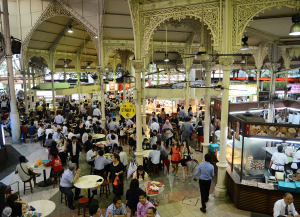
The Singapore Food Agency (SFA) has decided that Ukrainian producers of thermally processed products from poultry, pork and eggs will be able to obtain permits for exporting products to the Singapore market, the Foreign Ministry of Ukraine said.
“Any crises also bring new opportunities. The access of Ukrainian goods to the Singapore market will help our entrepreneurs increase exports, despite the coronavirus [COVID-19] crisis,” the Foreign Ministry’s press service said, citing Foreign Minister Dmytro Kuleba on Friday.
The Foreign Minister said that global markets and chains of goods supply are currently being transformed due to a pandemic, and Ukraine is able to use the changes to its advantage, first of all, revealing the hidden potential of exports to Asian markets.
Detailed explanations of the terms of export to Singapore can be obtained from the State Service of Ukraine on Food Safety and Consumer Protection.
The Foreign Ministry said that Ukrainian exporters who use the new opportunities should fill the form of the Ukrainian exporter from the Embassy of Ukraine in the Republic of Singapore (it concerns only the export of Ukrainian goods to the markets of ASEAN countries: Brunei, Vietnam, Indonesia, Cambodia, Laos, Malaysia, Myanmar, the Philippines, Singapore, Thailand) at the link: https://goo.gl/forms/wL5iAZEOk82bfv3n2.
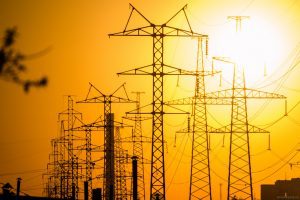
Ukraine in January-March 2020 increased its electricity exports by 33% or 548.9 million kWh year-over-year, to 2.211 billion kWh, the Energy and Environmental Protection Ministry of Ukraine has told Interfax-Ukraine.
Electricity supplies from the Burshtyn TPP energy island to Hungary, Slovakia, and Romania rose by 57.9%, to 1.622 billion kWh.
Exports to Poland grew by 11.9%, to 459.2 million kWh.
Exports to Moldova fell by 42.1%, to 130.3 million kWh.
Ukrainian electricity was not exported to Belarus or Russia in 2018 or 2019.
Ukraine imported 1.554 billion kWh of electricity in January-March 2020, including 909 million kWh from Slovakia, 371.8 million kWh from Hungary, 149.6 million kWh from Belarus, 70.2 million kWh from Romania, and 53.4 million kWh from the Russian Federation.
Due to crossflows related to the parallel work of the Integrated Power System (IPS) in Ukraine and systems in bordering countries (accounted for under contracts signed by Energomarket), Ukraine imported 14.5 million kWh of energy from Russia and 200,000 kWh from Belarus.
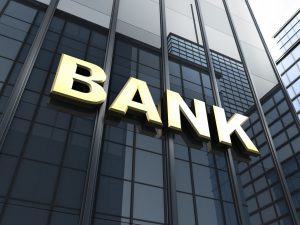
The European Bank for Reconstruction and Development (EBRD), under the Green Cities project, intends to provide Spetskomuntrans Communal Enterprise with a loan of EUR 28.5 million to finance the project for the rehabilitation and modernization of solid waste infrastructure in the city of Khmelnytsky, valued at EUR 36.5 million
According to information on the bank’s website, the decision on the project can be made on July 8, 2020. Now the project is under consideration.
The loan split into several tranches co-financed by up to EUR 5 million investment grant from the EU Neighborhood Investment Platform and up to EUR 3 million local contribution.
The project includes two phases. The phase I of the Project will address the city’s urgent investment needs with respect to the rehabilitation of the existing landfill, the construction of a new engineered sanitary landfill in compliance with the EU standards adjacent to the old one, the acquisition of new landfill equipment to ensure sustainable operation of the new landfill and improvements of the solid waste collection and transportation systems, co-financed from the city budget.
The phase II of the project includes the construction of a new material recovery facility for non-organic waste and a separate composting facility for pre-sorted organic waste. The EBRD said that this will reduce the share of solid waste going to the landfill.
Spetskomuntrans Communal Enterprise is responsible for the collection, treatment and disposal of municipal solid waste in Khmelnytsky. The company has contracts with more than 92,000 households and almost 3,000 commercial and public organizations for waste removal and disposal. The company is also an operator of the existing landfill located in the territory of the city.
EBRD, EUR, KHMELNYTSKY, LOAN, MLN

The enterprises and organizations of Ukraine in 2019 increased pretax profit from ordinary activities by 26%, to UAH 422.2 billion, the State Statistics Service has said.
According to the service, last year Ukrainian enterprises that worked profitably received UAH 596.3 billion in profit, which is 10.3% more than in 2018.
At the same time, 21.7% of enterprises worked with a negative financial result. Their losses in 2019 decreased by 15.3% compared to 2018, to UAH 174.1 billion.
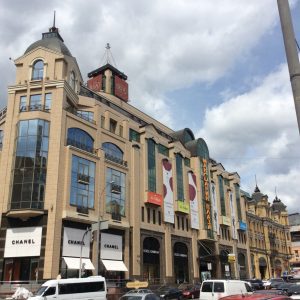
PrJSC Stadsis AB (Sweden), which is a shareholder of PrJSC Mandarin Plaza, a developer of Lavina Mall, Blockbuster Mall and Ocean Mall (all are located in Kyiv), has decided to segregate a new company from the enterprise, PrJSC Parus Invest.
According to the statement of Mandarin Plaza in the information disclosure system of the National Securities and Stock Market Commission, by the decision of the shareholder dated March 19, Parus Invest was segregated from PrJSC Mandarin Plaza with the transfer of part of the property, rights and obligations to it.
The shares of Mandarin Plaza are converted into the shares of Parus Invest with a ratio of 1:1.
The planned charter capital of new company is UAH 5.9 million.
PrJSC Mandarin Plaza was established in 2000. It is engaged in development activities in the segment of construction and operation of retail and office centers.
The charter capital of PrJSC Mandarin Plaza in April 2020 stood at UAH 21.7 million.
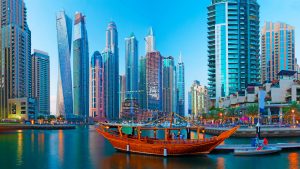
President of Ukraine Volodymyr Zelensky and Crown Prince of the Emirate of Abu Dhabi of the United Arab Emirates Sheikh Mohammed bin Zayed Al Nahyan have discussed the prospects for trade, economic and investment cooperation, in particular, in the field of agriculture, development of road and medical infrastructure in Ukraine.
“The coronavirus should not destroy international trade and economic ties between the countries. For Ukraine, the development of infrastructure is critical – above all, modern hospitals and high-quality roads. After the coronavirus, life will continue, and we can plan investments now,” the Ukrainian president said.